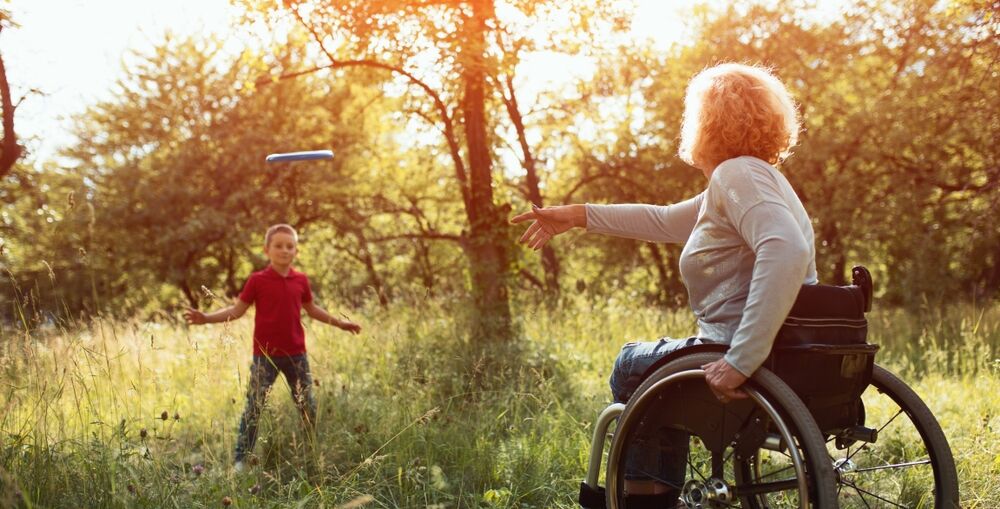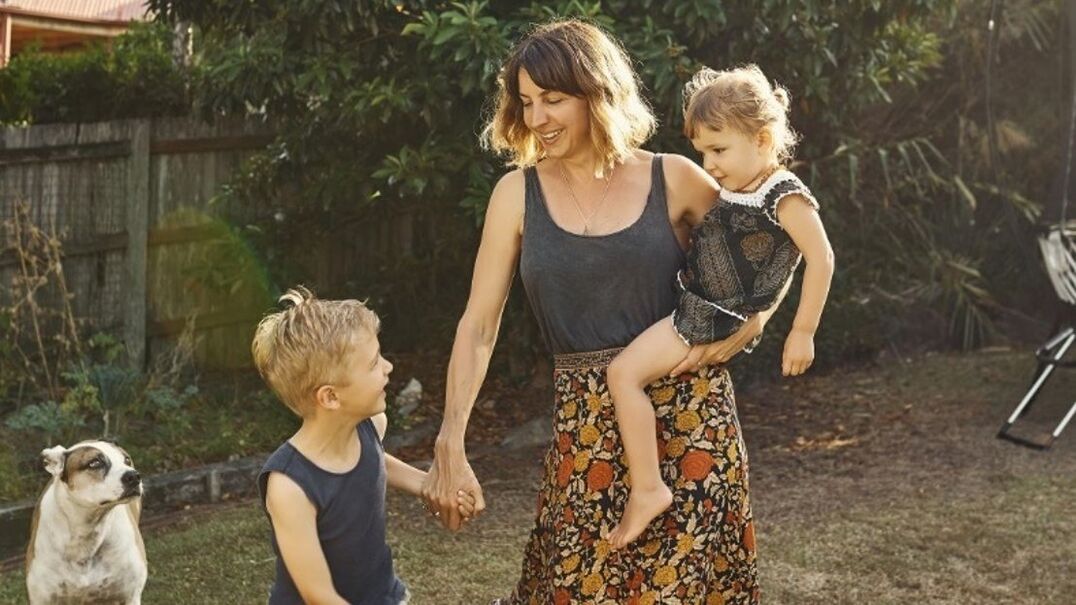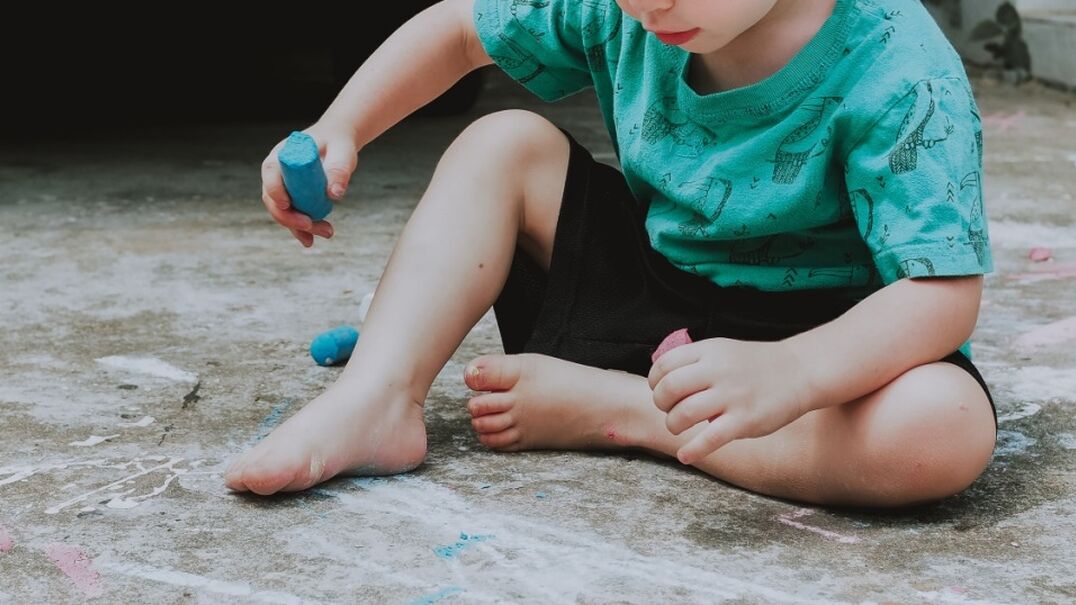Benji* is in Grade 3. His favourite animal is a tie between sloths and dogs. He loves his Mum’s apricot chicken, playing with Lego and watching Harry Potter movies.
When he’s finished school, he wants to either be a YouTuber or a vet.
But Benji wasn’t thinking about his future much a year ago. Both his parents grew up as wards of the state after experiencing abuse at home. Benji’s lived in 11 different places, been to 4 schools and has been scared of his dad for as long as he can remember.
After a particularly violent incident at home just before Christmas last year, the police were called by neighbours. Berry Street’s family violence service reached out and Benji’s mum, Janet, accepted their help.
Janet* and her children (aged 3, 8, 12 and 15 years) went into temporary accommodation. Berry Street provided help securing a private rental and arranged some counselling for her through a local Centre Against Sexual Assault.
Janet has started to deal with her trauma. But she didn’t know how to respond to Benji’s escalating behaviours. During the first month of Term 1, he was suspended from his new school for being disruptive, defiant and lashing out at other students and teachers. She realised they needed more help.

Janet’s case manager referred her and Benji to the Take Two Restoring Childhood service.
They were accepted into the program, but COVID restrictions came into effect at the same time, meaning they couldn’t see their clinician Anna in person. Instead, Anna called Janet on the phone and then arranged for their 4-session assessment to happen over Zoom.
During the first few sessions Anna, Janet and Benji all got to know each other. They explored Benji’s room together, he showed her his Lego creations and Anna showed him around her study. Benji decided he wanted to do the sessions from the floor of his bedroom, in his beanbag next to his Lego box.
Anna slowly started asking Benji and Janet questions about some of the things he was having troubles with. Benji got angry and swore at Anna every time she asked. So, she’d calmly revert to more playful topics for a while before broaching it again.
In the third session, Benji told her that he ‘hates’ his dad and whenever he thinks of him, he gets ‘really hot in my tummy and in my hands’. Benji also described himself as a coward because he ran and hid instead of protecting his mum and sisters.
After the fourth session, Anna called Janet and said she could see Benji was struggling with some memories of the violence that were blocking his ability to manage his feelings and his body. She suggested using Eye Movement Desensitisation and Reprocessing (EMDR) to help Benji deal with the memories and process some of his unresolved trauma.
Janet was sceptical initially. Anna explained more about EMDR and that it is an effective and evidence-based form of therapy recommended for post traumatic stress in children and adults. Janet agreed it sounded like it might be helpful.
What is EMDR?
EMDR is a relatively new type of psychotherapy developed about 25 years ago. A trained EMDR clinician assists the client to think about the resources that they can utilise to support their recovery. These might include supportive people in their network, safe places, soothing activities and to become more aware of their bodily sensations that signal an increased stress response. Once these resources are established, the client will be asked to recall a snapshot or image of a negative memory, along with a negative belief and a body sensation.
The client recalls the memory at the same time as experiencing ‘bilateral stimulation’. This allows both sides of the brain to communicate or process a memory – like the way the body naturally consolidates and information into memories through rapid eye movement (REM) during sleep. It can comparatively quickly change overwhelming and painful memories into ordinary ones which don’t cause as much distress.
A memory might be recalled numerous times in a single session, and if still unresolved revisited in another session. The level of disturbance caused by the memory is self-measured as a number before, during and after.
EMDR is a recognised evidence-based trauma treatment by the World Health Organization (WHO), the U.S. Department of Veterans Affairs and Department of Defense and many other Australian and international health agencies.
Anna (like many of the clinicians in Restoring Childhood and Take Two) is trained and accredited to use EMDR with children.
Bilateral stimulation
Bilateral stimulation is what the eye movement refers to in the name of the therapy. However, it can be swapped for other types of bilateral stimulation, including asking the client to:
- listen to sounds alternating in each ear through headphones
- place gentle vibrating buzzers on each hand or foot, or
- rapidly tap their arms or shoulders on each side (or their grown up can do it for little children).
Benji’s EMDR sessions
Anna taught Benji how to do butterfly hugs. She taught him this simple technique so he can use to ground himself whenever he wants, but also so they could use it as the bilateral stimulation during their EMDR sessions.
Once he’d got the hang of them and was enjoying it, Anna moved on to helping him create and practice using ‘a calm and safe place’ as another tool to ground him after visiting past ‘yucky memories’ during sessions. They talked about the things Benji loves and together they drew them into his calm and safe place using the whiteboard function in Zoom. Benji included a lake of his mum’s apricot chicken that he could swim in, saying it was his favourite food and would ‘cool down his hot tummy and hands’. He also drew a dancing wombat because he thought that would be funny to see and dance with, and a superhero to protect everyone.
After a few sessions Benji increasingly trusted Anna, and she was able to gradually support him through all the eight phases of EMDR treatment over telehealth.
Anna says progress since then has been rapid. Benji has not missed a session. He’s had a disrupted school year because of COVID, but is reportedly much calmer at school. He’s made a couple of mates who he has been riding his BMX bike with at a local park and has recently joined a cricket team.
It will still be a long road ahead for Benji, but Anna is confident that EMDR has stabilised him. His relationship with his mum has improved and he now feels safe enough to think about his hopes and dreams for the future, just like other kids his age.
Benji increasingly says he thinks he’s ‘smart’ and ‘strong’. He knows that it wasn’t his fault what his dad did, and he feels much less guilty about not being able to protect his mum. Memories he previously rated highly on the disturbance scale have really declined – meaning they are far less distressing than they used to be for him.
“Where he used to say he didn’t know what he wanted to be when he grew up, Benji now has a long list of jobs he’s considering. Top of the list at the moment are to be a YouTuber or a vet so he can help animals – especially dogs and sloths.”
“I’m so impressed with Janet and Benji’s resilience. They managed to leave a bad situation, and despite her own extensive trauma, Janet is doing everything she can to set her children up for a better future.”
*Names have been changed and models are used in our photos to protect the identity of the children and families we work with.
Restoring Childhood focuses on healing trauma for children and young people who have experienced family violence. It is part of Berry Street’s Take Two program.





